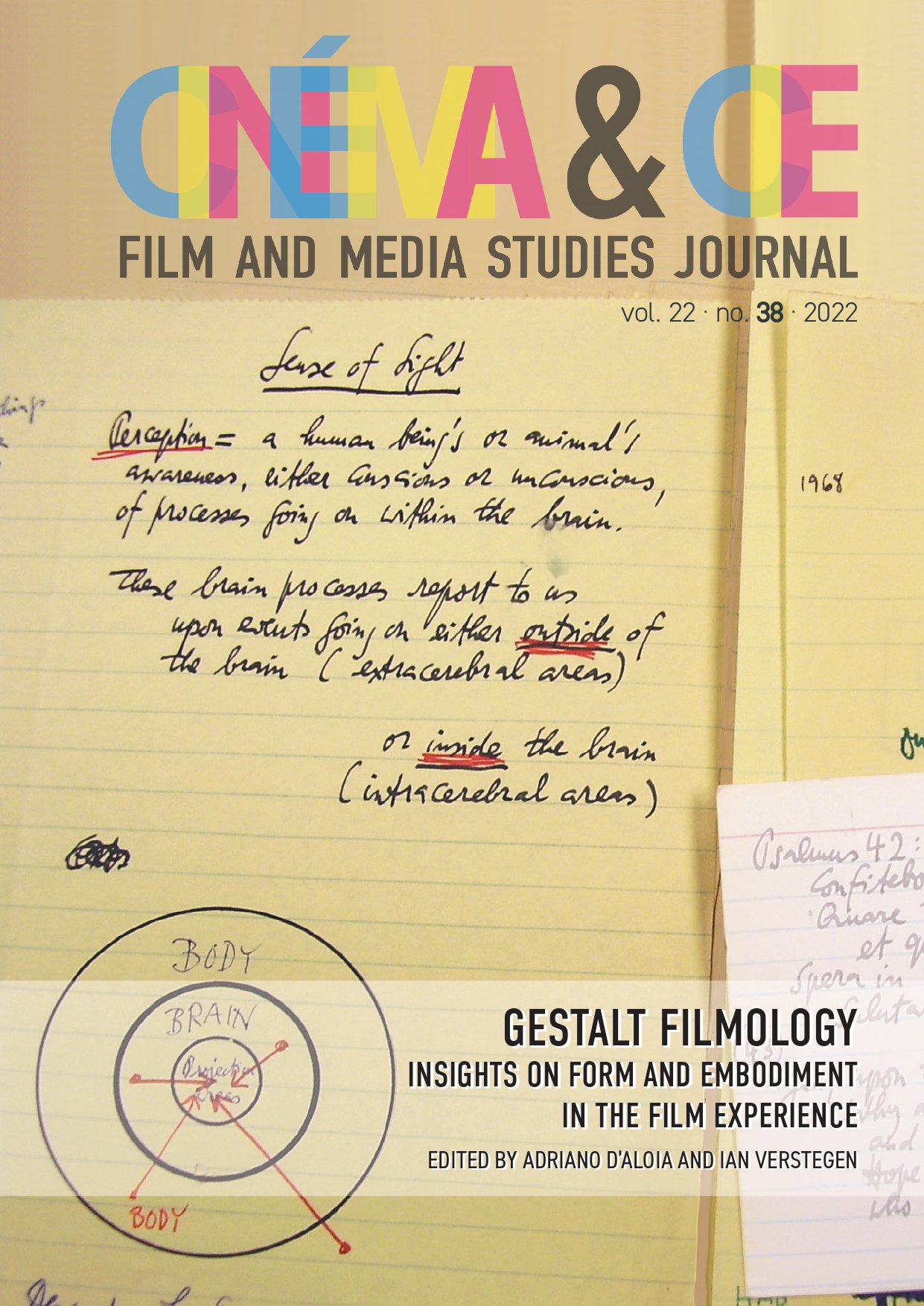The Meaning Potential of Motion Vectors in Cinema
DOI:
https://doi.org/10.54103/2036-461X/16785Keywords:
Camera movement, Editing, Embodied cognition, Film style, Forces, VectorsAbstract
This paper examines the meaning potential of directed forces or vectors in cinema. The first part draws on the pioneering work of Rudolf Arnheim to highlight the prominent role of vectors in the visual structuring of meaning in paintings. In the second part, we move on to explore the semantic significance of motion vectors in cinema. To this aim we first define and diagram the filmic space in which vectors may articulate themselves visually. Having firmly grounded this spatial framework in film theory, we adopt the terminology of Herbert Zettl to further distinguish between three types of motion vectors: primary motion vectors (elicited by motion of visual objects), secondary motion vectors (elicited by camera movement) and tertiary motion vectors (elicited by editing). We conclude this paper by applying the proposed conceptual tools of this paper to three filmic case-studies in which the relation between narrative meaning and motion vectors is further discussed and illustrated.
Downloads
Published
How to Cite
Issue
Section
License
Copyright (c) 2022 Maarten Coëgnarts

This work is licensed under a Creative Commons Attribution 4.0 International License.





